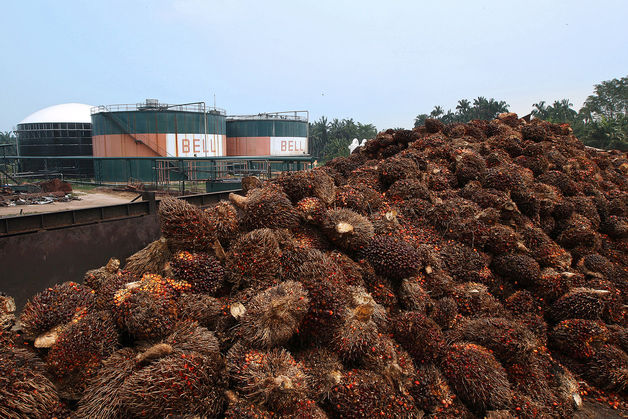Palm oil, rubber surge as floods in Southeast Asia hurt supplies

By Bloomberg
Palm oil and rubber advanced as flooding in Malaysia and Thailand disrupted supplies from Southeast Asia, and forecasters said that further heavy rain over the next few days will probably exacerbate the situation.
Palm oil for March delivery jumped as much as 2.6 percent to 2,308 ringgit ($660) a metric ton on Bursa Malaysia Derivatives, the highest price since Nov. 4, and traded at 2,295 ringgit at 3:16 p.m. in in Kuala Lumpur. The benchmark price for the edible oil rose for an eighth day, heading for the longest rally since 2010. Rubber climbed for a third day on the Tokyo Commodity Exchange and traded near a four-month high.
Malaysia evacuated more than 200,000 people as the worst flooding in decades left at least 10 people dead, with Transport Minister Liow Tiong Lai warning today that citizens in the largest palm oil producer after Indonesia must prepare for the worst. Rubber output in Thailand, the biggest supplier, and Malaysia will drop at least 30 percent because of the floods and prices are poised to rise further, according to Yium Tavarolit, chief executive officer of the International Rubber Consortium.
Palm oil “production may see a sharp decline this month because of the floods,” said Gnanasekar Thiagarajan, head of trading at Kaleesuwari Intercontinental Singapore Pte. The flood concerns may help prices extend gains, overriding factors such as lower crude oil prices and a possible drop in Indian demand because of increased import taxes, Gnanasekar said today.
More Rains
The floodwaters in Malaysia aren’t receding, Transport Minister Liow said today. More rains are forecast in the states of Sabah, Sarawak, Pahang and Johor until Dec. 31, the nation’s meteorological department said on its website. The four states, two in Peninsula Malaysia and two in Borneo, account for about 78 percent of Malaysia’s total palm production, according to figures from the country’s palm oil board.
Floods in Thailand’s eight southern provinces since Dec. 14 killed 14 people and injured eight, according to the Department of Disaster Prevention and Mitigation. The inundation in Malaysia is the worst in 30 years, the New Straits Times newspaper reported, citing Deputy Prime Minister Muhyiddin Yassin. The two countries share a border, with states in northern peninsula Malaysia abutting Thailand’s south.
While palm oil output is seasonal, typically dropping in the first quarter, this month’s floods may exacerbate this year’s decline. Output in Malaysia may contract 11 percent to 1.56 million tons this month amid the seasonal decline in yields, according to a Bloomberg survey published on Dec. 24.
Rubber production in Thailand and Malaysia will contract by at least 100,000 tons a month if floods persist, IRCo Chief Executive Officer Yium said in an interview today. The group is the operating arm of International Tripartite Rubber Council, which represents governments and exporters from Thailand, Indonesia and Malaysia.
‘Extend the Rally’
“Prices are likely to extend the rally as heavy rain in southern Thailand and northern Malaysia cause floods,” the Rubber Research Institute of Thailand said on its website today. Rains have spread to 60 percent of Thailand’s southern provinces, which account for 63 percent of plantations, it said.
Rubber for June delivery rose 0.6 percent to settle at 205.4 yen a kilogram on the Tokyo Commodity Exchange, the highest close for a most-active contract since Dec. 22. That day they ended at 207.1 yen, the highest finish since Aug. 1. Prices are headed for the first quarterly advance since 2013.
Scattered thundershowers and isolated heavy rains are forecast for Thailand’s southern provinces until Jan. 3, according to the country’s weather agency. Almost 200,000 families and 65,767 rai (10,522 hectares) of farmland have been affected and flooding remains in six provinces, it said.
